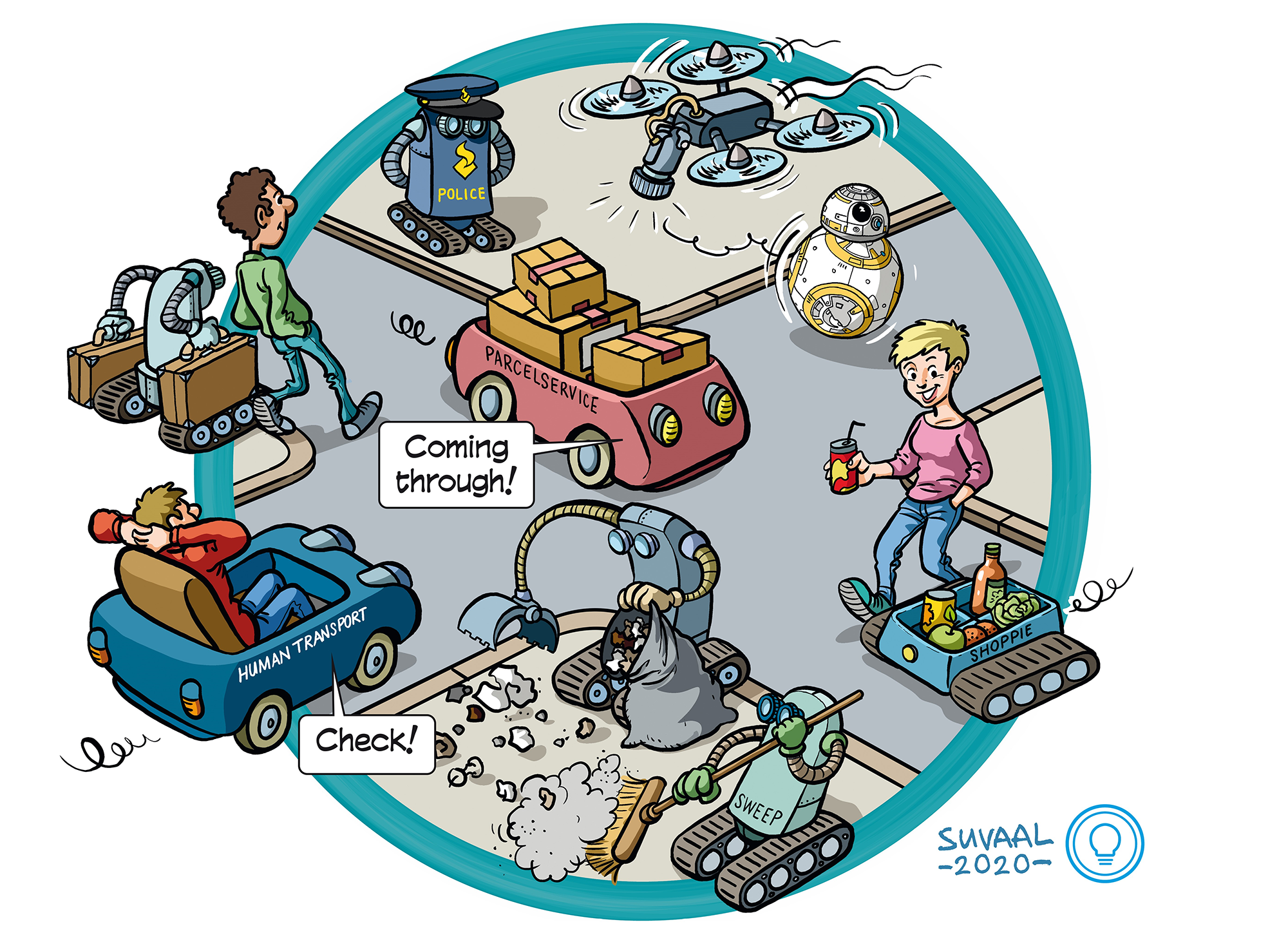Robots among humans: safe and socially intuitive navigation
Themes: Robotics, Software technology & Intelligent Systems


A TRL is a measure to indicate the matureness of a developing technology. When an innovative idea is discovered it is often not directly suitable for application. Usually such novel idea is subjected to further experimentation, testing and prototyping before it can be implemented. The image below shows how to read TRL’s to categorise the innovative ideas.
Summary of the project
In environments that become smarter every day, robots will increasingly share this space with humans and other robots while executing their tasks autonomously. For example, intelligent vehicles will provide mobility on-demand and deliver packages and autonomous boats and drones will perform environmental monitoring. These tasks require them to move in a complex, uncertain and changing environments. The challenge for these robots is to behave in such a way that it is safe and socially intuitive. The researcher aims to develop novel control and coordination methods that grant high performance and demonstrate safe motion through changing, dynamic and crowded environments.
The researcher is looking at two scenarios for control and coordination. The first one is when robots and humans can explicitly communicate and coordination is achieved via distributed constrained optimization. Since not all agents will explicitly communicate with the robot, think of a biker or a pedestrian, the researcher is also focusing on methods for communication-less implicit coordination based on intentions and movement. Here the researcher employs machine learning to model the interaction and provide guidance for a motion planner, which then computes a trajectory for the robot that is safe, satisfies the task and respect its dynamics.
What's next?
To bring the interaction of these robots to a next level and improve the navigation capabilities of mobile robots, further improvements in the underlaying models are required. For this, the researcher thinks that we need a good understanding of the trade-offs of trajectory optimization, machine learning and cognitive sciences. For the latter, the researcher is discussing collaborations with researchers with a social science background. Human behaviour is incredibly complex and predicting behaviour is full of uncertainties, how can such behaviour be incorporated in the model and in autonomous navigation methods?
dr. Javier Alonso-Mora
Amsterdam Institute for Advanced Metropolitan Solutions
Robotics Institute
Faculties involved
ME
